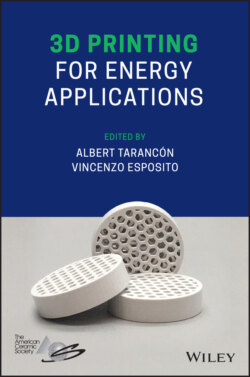Читать книгу 3D Printing for Energy Applications - Группа авторов - Страница 19
1.1 Introduction
ОглавлениеAdditive manufacturing (AM) technologies [1, 2] comprise a family of manufacturing methods that colloquially are known by the common appellation of “3D Printing.” AM has created a strong linkage between digital and physical manufacturing, thus nourishing by its nature, a wider trend, digitization, and the automation of the manufacturing industry. For this reason, the increasing adoption of AM within the manufacturing industry is pushing companies to research new ways of adapting their manufacturing models and optimize their manufacturing strategies by integrating these manufacturing technologies of tomorrow into existing production and bolster their strategies toward a digital to physical conversion [3]. To illustrate the digital to the physical linkage of AM, Figure 1.1 serves as an overview of the gross elements for a generic AM process.
The digital nature of AM processes lends itself to the possibility of adding functionality to the components across the process chain, herein functionality relates to the form or geometry, as the geometry of the workpiece is built up from digital data, so does the functionality as relates to the material placement and material composition. Hofmann et al. [4] and Sobczak and Drenchev [5] explored the various classes of functionally graded metal components. It is useful to classify the functional gradients in AM components according to different kinds of material and geometric gradation. Figure 1.2 shows a schematic of four types of material gradients in AM technologies. Type‐I is with a single material, and the functionality comes from the design and geometry of the structure. Type‐II deals with at least two materials used during the AM process, forming a discrete interface with an abrupt transition between the two materials. Type‐III involves at least two materials with a gradient interface between them. The material gradient can be introduced by process parameter change (microstructural control) or by in‐situ physical addition of multiple materials. Type‐IV refers to any hybrid functionality that is introduced by a combination of Types I−III or by the addition of sensors/other functional mechanisms. Functionality can also be achieved by integrating several AM processes into a hybrid process chain [6]. While the geometric gradients apply to most AM components (single/multi‐material), the material gradients are process dependent. Specifically, AM machine tools can change the material either at the voxel, layer, or part level. The capabilities of the process thus determine the kinds of functional gradients in AM components, which can be classified into geometric and material gradation.
Figure 1.1 Overview of physical and digital links of an AM process chain.
Figure 1.2 Schematic overview of functional AM components.
